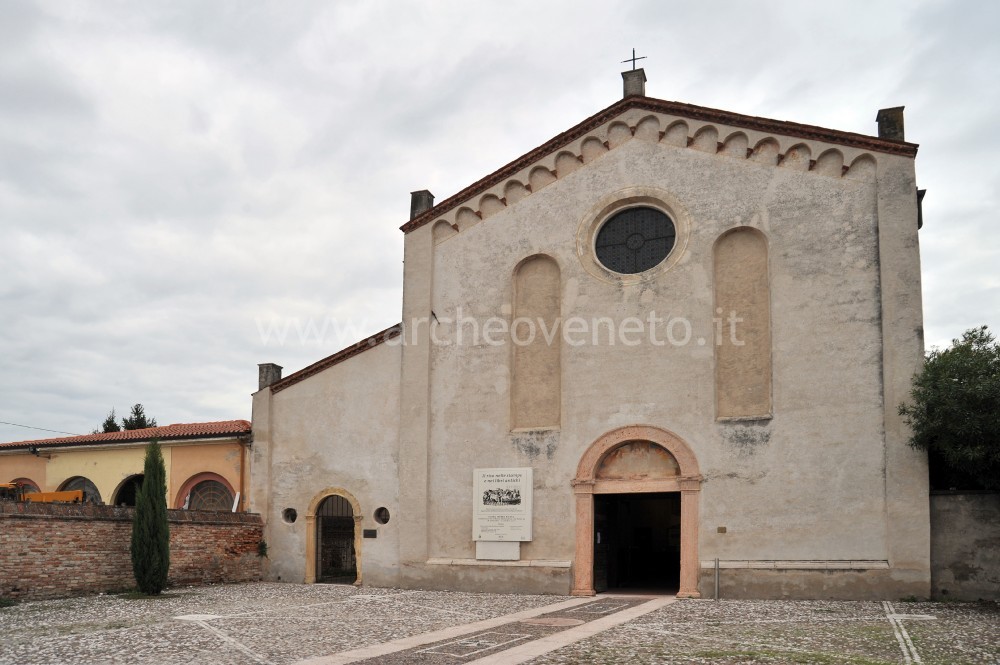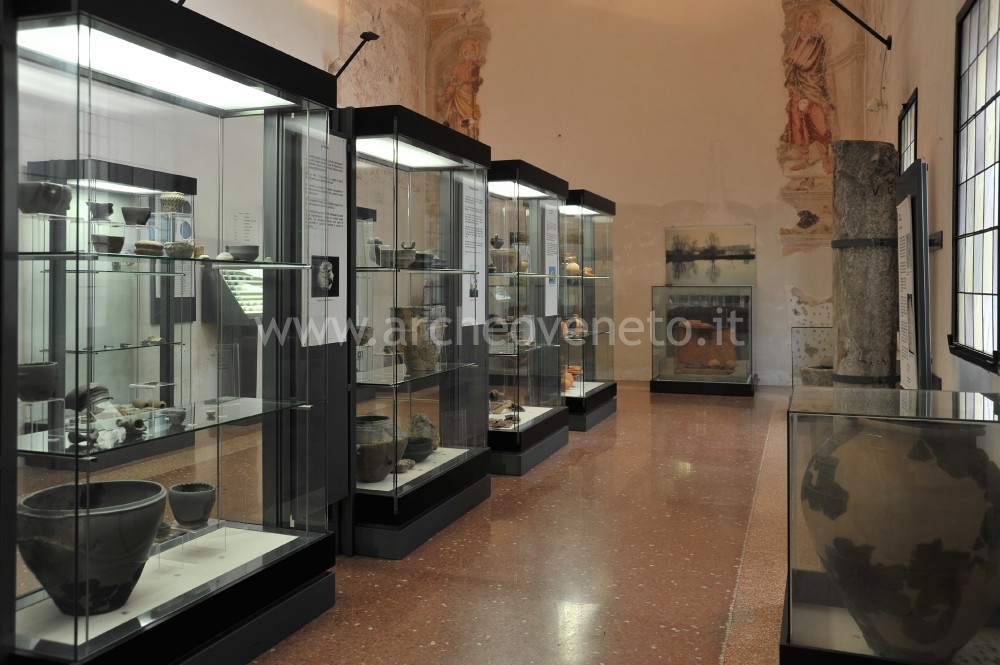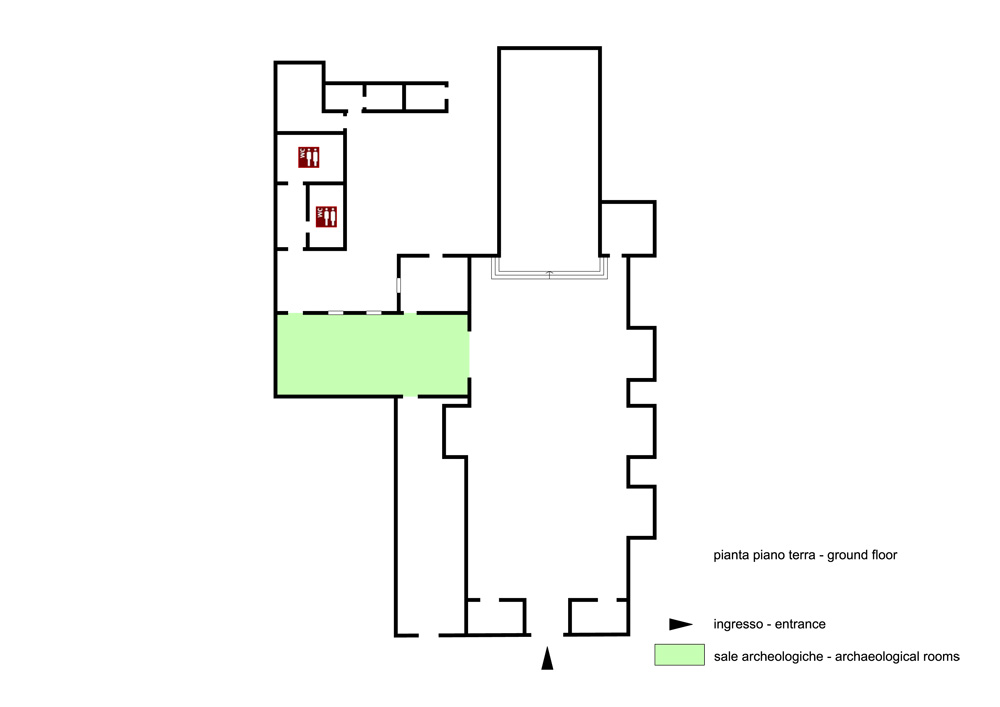|
|
File
Archaeological Museum – Isola della Scala
|
| Via Roma 35/a – 37063 Isola della Scala (VR)
|
  |
|
Summary

The Archaeological Museum of Isola della Scala, located in the former chapel of S. Antonio inside the church of S. Maria Maddalena, exhibits archaeological finds collected along the banks of the rivers Tione and Tartaro and in the region of the Bassa Veronese. The display cases of the only room of the museum follow a continuous chronological pathway with finds going from the Bronze to the Lombard Age.
Collection history
The museum collection was inaugurated in 1978 when the Regional board for the protection of antiques (Soprintendenza alle Antichità del Veneto) authorized the storage into this museum and the exhibition of the materials found in the region of Isola della Scala and of the surrounding towns. In the following years, thanks to a constant commitment by the Archaeological Association of Isola (Associazione Archeologica Isolana), the museum was enriched with new finds to the extent that in 1999, it became necessary to move them to the present museum, in the ancient Chiesa dei Frati (Friars’ Church), dedicated to S. Maria Maddalena.
|

 The museum starts with the finds of the Copper Age (second half of the 3rd millennium B.C.): arrowheads, a polished hatchet from Tarmassia and a flint dagger blade from Giarella. The greatest amount of prehistoric items found in the plain of Verona can be however dated back to the period between the Middle Bronze Age (18th – 16th century B.C.) and the Recent (13th century B.C.) –Final Bronze Age (12th -10th century B.C.). The settlements of this period were located on the edges of the depressions within which the rivers Tartaro and Tione flow and were built on wooden fences. The museum starts with the finds of the Copper Age (second half of the 3rd millennium B.C.): arrowheads, a polished hatchet from Tarmassia and a flint dagger blade from Giarella. The greatest amount of prehistoric items found in the plain of Verona can be however dated back to the period between the Middle Bronze Age (18th – 16th century B.C.) and the Recent (13th century B.C.) –Final Bronze Age (12th -10th century B.C.). The settlements of this period were located on the edges of the depressions within which the rivers Tartaro and Tione flow and were built on wooden fences.
Inside the first display case, there are some finds belonging to the Ancient Bronze Age coming from Cà Magre: among these three cups, one of which is handled, a fragment of a pot with an engraved decoration and a weight. A weight, a polished-stone hatchet, a bronze axe, a bronze chisel, fragments of a bone comb, miniature pots and a melting spoon, all found in the town of Trevenzuolo, belong to the Middle Bronze Age. The Recent Bronze Age is represented by materials coming from Corte Vivaro among which a zoomorphic fictile figurine, some polished-stone hatchets, a sheath, a bowl, a crescent-shaped handle, some weights, a worked deer antler and a holed earthen plate. The visit goes on with a display case-panel dedicated to the technology and the flint tools used by the prehistoric man until the Recent Bronze Age. Inside this display case, beside a detailed description of the flint working techniques, numerous tools discovered in the region of Verona are displayed, such as sickle items, quadrangular scrapers and arrowheads.
The third display case is fully dedicated to an important settlement of the Middle Bronze Age dug in this region in 1992: the settlement of the Giarella. Many large carinate bowls with crescent-shaped handles and cross-shaped decorations come from this site together with several items in worked bone decorated with a pattern reproducing the dotted face of a dice, spindle whorls, ceramic jars, biconical pots, dolia, amphorae, a bronze sword, fragments of the plaster used to build huts with branch marks and a large block of clay for the mixture.
The following display case collects the archaeological material of the Iron Age (9th-5th century B.C.) whose present knowledge is almost exclusively limited to the necropolises found in the area surrounding Isola della Scala: the grave yard of Sorgà and of Palazzina. Different handled cups belonging to the first necropolis stand out (one of which with small bronze studded decorations), together with some cinerary urns, a bowl-cover, several jars, a part of a boot-shaped pot and some reels. The large Venetian ceramic dolium which is 74 cm high and different fragments of striped pots (red and black striped) come from the second necropolis. The Roman presence in the ancient region of Isola della Scala is witnessed by the necropolis of the Pellegrina and by the milestone of Massenzio. The latter, found in the town of Falceri, shows that one of the most important roads of northern Italy, the consular way Claudia Augusta Padana, which was laid in the Julio-Claudian period and refurbished in late Antiquity by the emperor Maxentius (306-312 A.D.), used to cross this area. The greatest amount of the Roman finds comes from the bog of S. Carlo della Pellegrina and were brought back to light during the excavations carried out in 1989 and after a following intervention of underwater exploration which allowed to confirm the presence of a necropolis of the 1st century A.D. The graves displayed inside the Museum were mainly of two types: a cut amphora or a cist burial. The grave goods displayed inside the two following display cases included different kinds of pottery (utilitarian pottery painted jars, grey clay cups, small cups, jars and a stamped terra sigillata plate), lamps, bronze fibulas, glass vessels (a blue glass amphora, a cup with a part of a spiral handle, unguentaria) and bronze tools (billhooks, a knife and a sickle). Different kinds of material come from other places such as a red elliptical jasper engraved on both sides (from Trevenzuolo), mosaic tiles (from Tarmasia), pieces of an earthenware (from San Gabriele) and marble floor (from Falceri), quern remains, numerous coins (from the Celtic-Padan coinage to the Roman one of the 4th century A.D.) and three small bronzes of excellent manufacture represented by a Putto on a dolphin, a Lar and the fight against Hercules and Antaeus (three copies are displayed in the museum while the original ones are located in the Archaeological Museum at the Roman Theatre of Verona).
|

Admission: Negli orari di apertura
Ticket: No
 School access School access
Opening Days
| Tipology |
When |
Specs |
| Summer/Winter |
Monday |
Upon reservation |
| Summer/Winter |
Tuesday |
Upon reservation |
| Summer/Winter |
Wednesday |
Upon reservation |
| Summer/Winter |
Thursday |
Upon reservation |
| Summer/Winter |
Friday |
Upon reservation |
| Summer/Winter |
Saturday |
Upon reservation |
| Summer/Winter |
Sunday |
First sunday of the month: 15.00 – 18.00 |
Recommended tour time (minutes): 30
 Brochure Brochure
Italian
 Information boards Information boards
Italian
 Mobile cards Mobile cards
Italian
 Captions under exhibits Captions under exhibits
Italian
 Guided Tours Guided Tours
 Other activities Other activities
| Musei e raccolte archeologiche del Veneto 2004, a cura di Di Mauro A., Dosson di Casier, pp. 130. |
| Bonetto J. 2009, Veneto (Archeologia delle Regioni d’Italia), Roma, pp. 362. |
|

